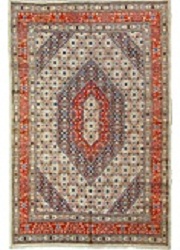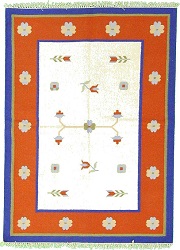 Many of us remain in a fix when it comes to keeping our round oriental rugs clean. Not only they get dirty often, but we also don’t know the proper means of cleaning it. One of the main means on how they get dirty is through the direct contact with the soil like clay, sand, and even other dirty abrasive solids which get tracked into the homes of the people through the sneakers and shoes. Such direct contact of the soil can be very much abrasive and even will lead to constant cut of the fibres of your rug. This will greatly reduce the rug’s life.
Many of us remain in a fix when it comes to keeping our round oriental rugs clean. Not only they get dirty often, but we also don’t know the proper means of cleaning it. One of the main means on how they get dirty is through the direct contact with the soil like clay, sand, and even other dirty abrasive solids which get tracked into the homes of the people through the sneakers and shoes. Such direct contact of the soil can be very much abrasive and even will lead to constant cut of the fibres of your rug. This will greatly reduce the rug’s life.
Most of the rug cleaning experts like [blue oriental rugs] agency feel that nowadays, people have interested in buying rugs and that is all. They don’t feel the necessity of giving the rug a thorough washing at least once in a week.By vaccumazing you can easily remove most of the gritty and dreaful soil, which will in short delay the need of shampooing and also will lead to increasing the life of the rug. At times you can do the work but you may need the help of professionals as and when the dirt and dust is more.
There are multiple equipments which you can use. Now for the best cleaning job, you can get a normal vacuum cleaner with a beater bar and motor driven brush. Most of the [round oriental rugs] requires the combined action of suction and vibration to get the best out of this type. Usually, a suction type cleaner or even a canister kind of brush will remove the surface litter and that too without loosening the embedded dirt. And the same can be very much true for the electric broom or floor sweeper.
Most of the rug cleaning agencies like blue oriented rugs agencies feel that to get the best cleaning effect, one must buy a costly or expensive vaccum cleaner. In addition to that there are various guides and journals online which can easily help you to identify the best and quality-tested vaccums which can definitely become a money saver. In short, a clean and spot-less rug will be an added glamour and beauty for your home.

